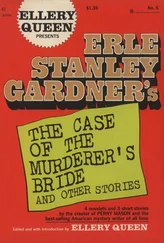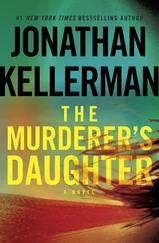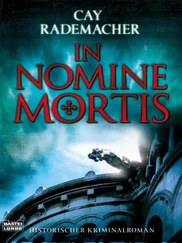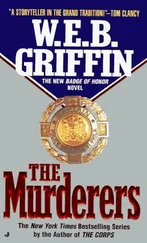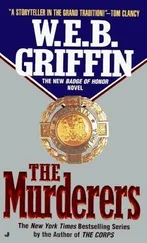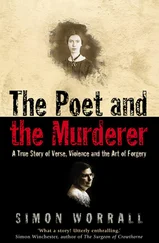Cay Rademacher - The Murderer in Ruins
Здесь есть возможность читать онлайн «Cay Rademacher - The Murderer in Ruins» весь текст электронной книги совершенно бесплатно (целиком полную версию без сокращений). В некоторых случаях можно слушать аудио, скачать через торрент в формате fb2 и присутствует краткое содержание. Год выпуска: 2015, ISBN: 2015, Издательство: Arcadia Books Limited, Жанр: Триллер, на английском языке. Описание произведения, (предисловие) а так же отзывы посетителей доступны на портале библиотеки ЛибКат.
- Название:The Murderer in Ruins
- Автор:
- Издательство:Arcadia Books Limited
- Жанр:
- Год:2015
- ISBN:9781910050750
- Рейтинг книги:5 / 5. Голосов: 1
-
Избранное:Добавить в избранное
- Отзывы:
-
Ваша оценка:
- 100
- 1
- 2
- 3
- 4
- 5
The Murderer in Ruins: краткое содержание, описание и аннотация
Предлагаем к чтению аннотацию, описание, краткое содержание или предисловие (зависит от того, что написал сам автор книги «The Murderer in Ruins»). Если вы не нашли необходимую информацию о книге — напишите в комментариях, мы постараемся отыскать её.
The Murderer in Ruins — читать онлайн бесплатно полную книгу (весь текст) целиком
Ниже представлен текст книги, разбитый по страницам. Система сохранения места последней прочитанной страницы, позволяет с удобством читать онлайн бесплатно книгу «The Murderer in Ruins», без необходимости каждый раз заново искать на чём Вы остановились. Поставьте закладку, и сможете в любой момент перейти на страницу, на которой закончили чтение.
Интервал:
Закладка:
‘And they might be right,’ Stave mumbled.
‘That doesn’t exactly make the job any easier. Your job, I might add. Enjoy your Sunday, Chief Inspector.’
Stave climbed out, nodded, closed the heavy Mercedes door and watched as the car moved off.
‘Enjoy your Sunday,’ he muttered, than went into the office. It didn’t look as if he was going to have time today to hang out at the station looking for his son.
He didn’t even manage to get as far as his office without being stopped. A shadow emerged from between the columns by the doorway to the building: a young man, freshly shaven, bright, with notebook and pencil in hands that were still blue from the cold.
‘Ludwig Kleensch, from Die Zeit, ’ he introduced himself. ‘Can I have a word?’
Stave had to make up his mind quickly. Should he just ignore the journalist? Or would he speak to him. The British had allowed daily and weekly newspapers to start up. Most were run by political parties and were local Hamburg-only papers. Die Welt was unaffiliated to any party and was available throughout the British zone, as was Die Zeit, the weekly that was the first to be licensed by the British authorities. But in this winter even the daily newspapers only had four to six pages and were published just twice a week. There was too little paper, even the yellowish, unrefined stuff reminiscent of old cheap drawing paper for children, but thinner.
The chief inspector did his calculations. Today was Sunday; between now and Thursday when Die Zeit came out he would be left in peace, at least as long as Kleensch was the only journalist already in on the story.
‘Very well,’ he said, trying in vain to manage a smile as he held the door open for the journalist. ‘At least in my office your hands won’t drop off from the cold.’
Kleensch nodded, grateful and surprised to be treated so cordially.
‘I want to talk to you about the rubble murderer,’ Kleensch said when they were upstairs.
‘The “rubble murderer”?’
‘That’s what I intend to call him. It has a ring to it. Or would you prefer the Hamburg Strangler?’
Stave didn’t bother to answer, nor did he bother to ask how the journalist already knew so much, even the fact that he was the one running the case. He thought about the crammed newspaper pages, which had to carry official notices, wedding and death notices and news from all round the world. Kleensch wouldn’t have much space. Maybe the readers wouldn’t even notice his story. After 12 years of Nazi censorship nobody believed anything they read in the newspapers any more.
As if he’d read Stave’s mind, Kleensch leaned towards him and said, in a rather threatening tone of voice, ‘I’ve already told the editor it’s a big story.’
The chief inspector nodded resignedly, then gave the journalist a straightforward account of the case, handed him copies of the posters requesting information about the victims and told him what the CID had done so far. He only kept to himself what he planned to do next. He felt it might sound a bit pathetic.
‘Will there be more murders?’ Kleensch asked, scribbling so intensely he didn’t even look up from his notepad.
What a stupid question, Stave thought to himself and then realised that it was a trap. If he said, ‘We can’t exclude that possibility,’ the journalist would quote him on it, and that wouldn’t sound good. Instead he said, ‘We hope to have our hands on the killer within the next few days.’
Kleensch smiled, half in disappointment, half in recognition of what the inspector had done. He left Stave a card, printed on the same grubby paper as the newspapers themselves. ‘If anything should turn up, I’d be grateful if you’d give me a call. I don’t want to get anything wrong.’
The journalist shook his hand, opened the door and nearly walked straight into Dr Crzisini. He stared at him curiously, as if about to ask a question, then thought the better of it and left.
The pathologist came in, followed a few moments later by Maschke. Stave wondered if he’d been lurking somewhere out of sight until the journalist had gone down the stairs. Then behind him MacDonald and Erna Berg appeared. Stave wondered who had asked her, but said nothing.
‘I’ll make tea,’ she said with a smile.
Stave rummaged around in his desk until he found his large-scale city map and unfolded it carefully. It was a post-war version, hatched grey and red where the bombed areas were. And there were a lot of them. Stave used tacks to put the map up on one wall of the office, then stuck three red-topped pins into the bombed areas, marking the places where the bodies had been found.
The others watched him in silence. Maschke was smoking, Czrisini gave the impression of somebody following an interesting operation and MacDonald looked like a soldier. Erna Berg, a steaming teapot in her hands, had stopped in the doorway and was looking at the map with horror.
‘He’s attacking people everywhere,’ she mumbled.
‘Three times is not yet everywhere,’ Stave contradicted her. ‘In what way could the victims be related?’ he asked, looking at Czrisini.
The pathologist nodded thoughtfully. ‘A grandfather, daughter and her daughter? Possible. It could actually fit with their ages. If we put the first victim, the young woman, at the upper end of the likely age spectrum; I would put her as at most 22. And we put the child at the youngest age, probably six. That would make her a very young mother, with a very old father because he had to be around 70. It is also possible that the first and third victims were actually sisters, two girls about ten years apart. The old man could have been their grandfather. I reckon that is more likely, although not very probable either. But how can you prove it? Up until now I’ve found no distinguishing features, such as birthmarks or the like.’
‘But nor is there anything to suggest they were not related?’
‘No.’
‘Apart from where the bodies were found,’ Maschke intervened, pointing the glowing end of his cigarette at the map. ‘The bodies were found very far apart. If they had been one family, wouldn’t they all have lived together? The child at least would have lived with its mother – or the two sisters would have lived together, if they were sisters, that is.’
‘Or they lived with their grandfather,’ MacDonald said. ‘Like that little Mainke who was taken in by his grandmother.’
‘We can’t exclude any possibility,’ Stave said again, scratching his head. ‘Let us assume it is a family. Let us assume they were all killed in the same place. Remember: there is nothing to say they were killed where they were found. Might it not even be possible they were all killed at the same time? And that the murderer deposited the bodies in difference places afterwards. To cover up any clues.’
Czrisini looked thoughtful. ‘It’s so incredibly cold,’ he murmured. ‘It’s hard to make exact estimates to compare with one another. The same time of death is indeed a possibility, and we just found them at different times. I can say that for certain about the old man and young woman. And I’ll soon know more in the case of the child.’
Stave found himself imagining the little body lying on the dissecting table and forced himself to look out of the window instead. Some things just didn’t bear thinking about.
MacDonald sighed. ‘That might mean there are still more bodies lying around somewhere, that we just haven’t found yet. The father, grandmother, brothers or sisters to the child…’
‘I still think it’s more likely that they have nothing to do with one another,’ said Maschke, twirling his lit cigarette dangerously close to the map. ‘They were all out there in the ruins, maybe looking for something, maybe just taking a shortcut. The murderer was lying in wait for them. Where they were found is where they were killed. The medallion is the calling card of a madman.’
Читать дальшеИнтервал:
Закладка:
Похожие книги на «The Murderer in Ruins»
Представляем Вашему вниманию похожие книги на «The Murderer in Ruins» списком для выбора. Мы отобрали схожую по названию и смыслу литературу в надежде предоставить читателям больше вариантов отыскать новые, интересные, ещё непрочитанные произведения.
Обсуждение, отзывы о книге «The Murderer in Ruins» и просто собственные мнения читателей. Оставьте ваши комментарии, напишите, что Вы думаете о произведении, его смысле или главных героях. Укажите что конкретно понравилось, а что нет, и почему Вы так считаете.

